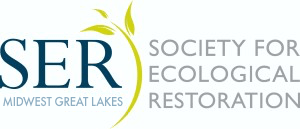New Resource for Prairie Seed and Seedling Identification
by Ashton Merbach
The restoration of any tallgrass prairie begins with the seed itself. When beginning a restoration project, it is important to have the proper tools to identify which seed you are planting and are able to identify its species as germinates and grows into a seedling. When being introduced into the world of prairie ecology, I was able to find a plethora of comprehensive field guides for the identification of prairie species at their mature stages. However, there was a clear lack in the availability of resources that aid in the identification of these species in their seed and seedling stages. Accurate identification of seedlings in their first few stages of growth can help us measure the success of a restoration project and sheds important insight on which species have germinated, emerged, and established in the field.
This summer, I remotely interned at the Chicago Botanical Garden and worked with the Barak lab to complete a project that aims to consolidate the existing knowledge of seed and seedling guides in order to identify gaps in knowledge on underrepresented species. The Google Sheet attached: (https://docs.google.com/spreadsheets/d/1jyp1Dw8M9sQJXrWLzhJOn1-KvZr8DKbfQlzsLhP-RRc/edit?usp=sharing) lists the five popular seedling identification resources found, and the species that appear in each guide, as well as some comprehensive field guides for mature plants that might be helpful for restoration projects (listed at the bottom of the sheet). The second tab of this sheet is a full list of species found in these prairie seedling guides, including their genus, species, family, and common names. The species are listed in alphabetical order and show which guides they can be found in for more detailed information on their characteristics and ways to identify them in the field. We were able to identify 218 unique prairie species across the five guides, the majority, unsurprisingly, from the Asteraceae, Poaceae, and Fabaceae families. A graphic is attached below to illustrate the distribution of the species we found.
Our goal for this project is for this Google Sheet resource to act as a living document that can be edited as new information comes along. If you know of any existing seed or seedling identification guides for Midwestern tallgrass prairie species or have any questions/suggestions, please email ashtonmerbach2023@u.northwestern.edu.
We hope to continue our work on this project during the academic year if conditions with COVID-19 allow for lab work and in-person research. The next steps for this project include building upon the existing knowledge found in these seedling guides by planting and photographing species that are underrepresented in these preexisting guides. We hope to address and fill in the existing gaps in knowledge of underrepresented species by providing more photos and detailed characteristics of a species’ seed and seedling stages for quick and easy identification. We hope that this resource continues to grow and aid in the success of other researchers’ projects for prairie restoration!
Ashton Merbach is an undergraduate student at Northwestern University studying Environmental Science. She has been working remotely with Becky Barak, a conservation scientist at Chicago Botanic Garden, and a member of SER MWGL. This project has been made possible by undergraduate funding from Northwestern University and support from the Chicago Botanic Garden internship program.”

